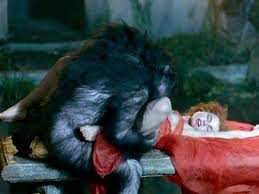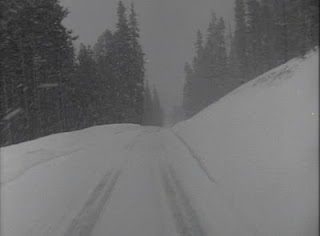This movie is as cute and charming as you'd expect, which makes me self-conscious of being overly critical, as though I were appraising a child's artwork. Of course this is a film by respected artists, not a kid's picture, nor a reality TV show or a commercial (which it also resembles) so I'll try to get over that and just be honest.
Kings of Pastry is a documentary about the Meilleurs Ouvrier de France*; more particularly, one Chicago-based pastry chef's experience in that illustrious competition. Two other contestants are also interviewed/followed, but get far less screen-time. This confuses the narrative and causes one to wonder why our chef was chosen among the three to be the protagonist of the film. The only reason I can think of is that he's located in America, and he's also the only one of them to speak English in the film. As can be expected, the skeleton provided by the classic "going for the goal" structure is filled out with people making cakes and talking about making cakes.
Aesthetically everything about the movie runs opposite to my tastes: it uses the most cliché French music imaginable; its subjects visibly try not to act awkward in front of the camera but, inundated with reality TV etc, are better at that than people were in the past and are consequently less interesting, inhabiting a middle-zone of dull simulacrum; it's punctuated by quotes about being the best, having the drive, and that kind of crap. The video quality is terrible: my assumption that the big screen is the best place to see any film was called into question, and given the incredible leaps in quality DV has made in the past ten years as well as the high profile of the filmmakers, I was definitely taken aback. Even the font of the captions gives it a cheap made-on-my-PC feel.
Poor image quality is never too hard to adjust to. What's worse is that all the information presented in the film comes from interview footage and text on the screen, two things I find irritating (particularly the latter) and surprising from director D. A. Pennebaker, whose Dont Look Back is very much concerned with building a kind of narrative out of action-footage fragments alone. By "information" I don't just mean facts about the contest, the chefs, or France; the very story itself is spelled out through captions and expository dialogue like a bad comic book.
1. quirkiness of French people, particularly how much they love food and the way they speak English
2. delight in looking at elaborate, fragile, and hideous post-nouveau things sitting, breaking, and being eaten
Both of these have their limits, and for me those limits are low.
2. delight in looking at elaborate, fragile, and hideous post-nouveau things sitting, breaking, and being eaten
Both of these have their limits, and for me those limits are low.
Having been subjected to many hours' worth of the Food Network by various girls throughout my life, I can say that this movie is almost identical to the ever-popular pastry programs on that channel. The Kings of Pastry trailer*, which I've seen four times (every time I've come to Film Forum, in fact), contains all the charm and humor of the film itself, as well as the best lines and none of the boring narrative, so unless you have a hardcore interest in cakes/pastries I'd recommend just sticking to that.













